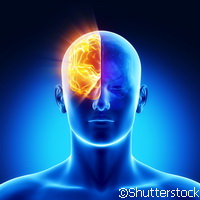Visual perception improved by magnetic stimulation
What we see is not always what we get. In fact, contrary to popular belief, people with perfect eyesight do not really perceive everything that happens before them. The brain simply won't allow it. It does this so that we don't overload our senses, and in fact the brain frequently 'buffers' our perception, allowing us to register what it deems appropriate. This process is likened to a digital transmission of images whereby an initial visual scan is made, and then, to reduce data transmissions, only changes to the initial visual scan are transmitted. However, one international team of researchers has achieved some amazing results in this area of visual perception, supported by the Seventh Framework Programme (FP7) via the ERA-Net Network of European Funding for Neuroscience Research (NEURON) and the Marie Curie Intra-European Programme. Through the use of transcranial magnetic stimulation (TMS), the BEYONDVIS ('When attention meets perception') project team have enhanced the visual abilities of a group of healthy subjects, allowing them to perceive a lot more of what is really before them. The researchers, led by Antoni Valero-Cabré, believe that their breakthrough could be beneficial to people with certain visual disorders, once original rehabilitation techniques are developed. Writing in the journal PLoS ONE, they also note that it can be used to improve the performance of people who rely on a high level of visual acuity for the completion of their tasks. In particular, the researchers found that following magnetic stimulation of an area of the brain's right hemisphere involved in perceptual awareness and in orienting spatial attention, the subjects appeared more likely to perceive a target appearing on a screen. The procedure does not involve any surgery, and in fact, relies on the completely non-invasive procedure of TMS, which uses magnetic fields to stimulate nerve cells in the brain. TMS is used as tool to treat various neurological and psychiatric disorders including Parkinson's disease and depression. In addition to its use for treating disorders, scientists have also been investigating its potential to enhance certain brain functions in healthy subjects. The team targeted the portion of the right cerebral hemisphere known as the frontal eye field (FEF) for this magnetic stimulation. This area has already been identified as being involved in the planning of optical movements and the orientation of each individual's attention in their visual space, despite it not constituting a primary visual area. Though the results were only temporary, the researchers discovered that visual acuity in healthy individuals improved by 12 % as a result of single TMS pulses. These magnetic pulses lasted between 80 and 140 milliseconds (one millisecond is equivalent to a thousandth of a second). To compare, an average camera shutter speed is 8 milliseconds, while it takes a fly 3 milliseconds to flaps its wings. What this means is that despite the fact that the vision of a healthy human adult is already functioning efficiently, there is still room for improvement through the use of TMS. The researchers were quick to note that the enhancements were only short-lived, which is why they want to go on to explore the possibility of using repetitive TMS instead of single pulses, to ascertain whether it is possible to obtain long-lasting changes of cerebral activity. For the moment, the researchers are also proud to have proved that the right FEF pre-target activity is indeed relevant for conscious perception, and that its non-invasive manipulation with TMS can induce relevant visual perceptual sensitivity improvements.For more information, please visit: Centre national de la recherche scientifique (CNRS), Délégation Paris Michel-Ange: http://www.cnrs.fr/paris-michel-ange/?lang=fr PLoS ONE: http://www.plosone.org/ ERA-NET NEURON: http://www.neuron-eranet.eu/
Countries
Spain, France, United States



